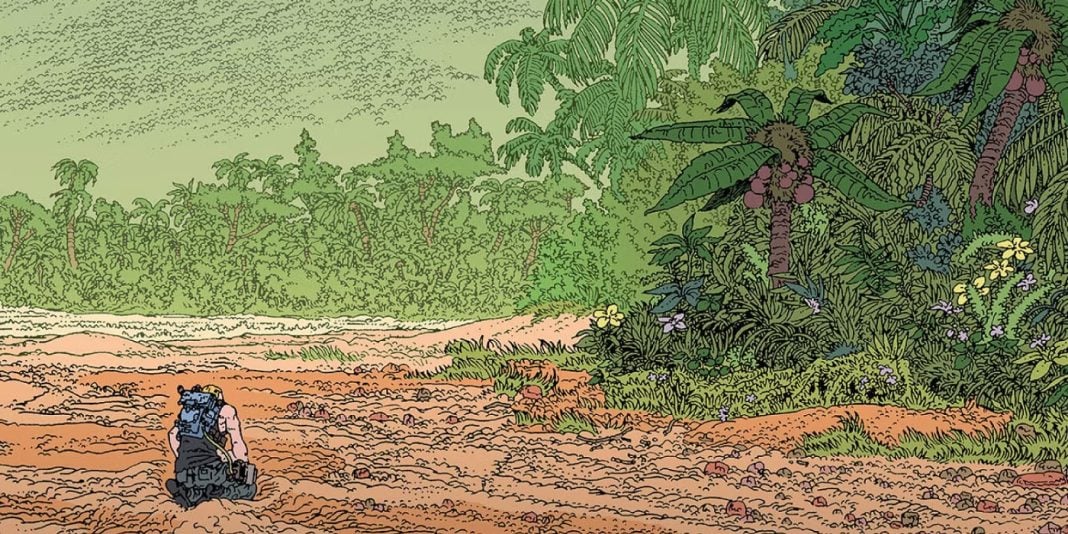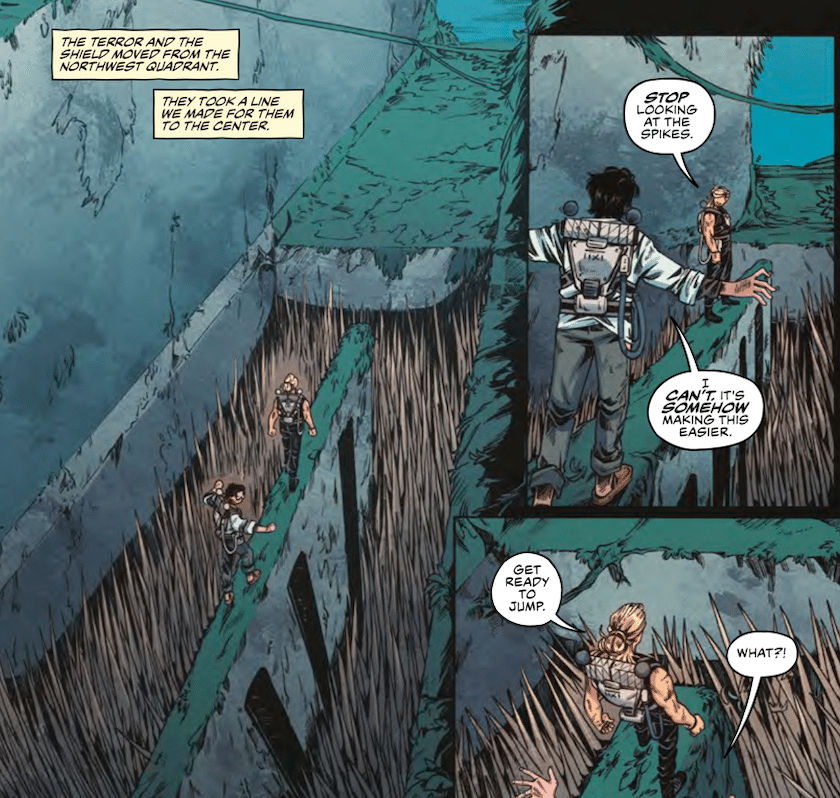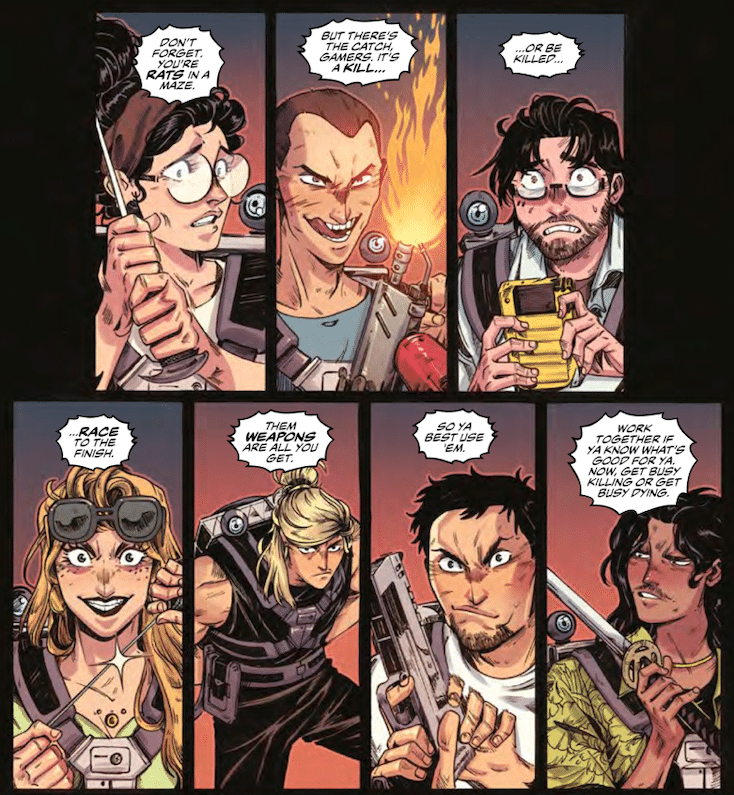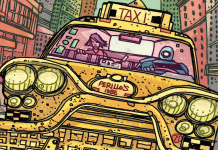 Nature’s Labyrinth
Nature’s Labyrinth
Writer: Zac Thompson
Artist: Bayleigh Underwood
Colorist: Warnia Sahadewa
Letterer: Rus Wooton
Publisher: Mad Cave Studios
Writer Zac Thompson made a defining impression on me with his Vault Comics series No One’s Rose. Nature’s Labyrinth, published by Mad Cave and recently collected in trade, explores similar themes about the runaway cruelties that result from the intersection of capitalism and government. Aided by the lively manga-inspired cartooning of artist Bayleigh Underwood, Nature’s Labyrinth is a dystopian, battle royale satire with a biting and dark sense of humor. The book draws upon visuals borrowed from reality television, 80s action flicks, and tropes of the young adult dystopian genre, effectively mixing The Hunger Games with The Running Man and Survivor if the stakes were truly life or death.
On a private island far from civilization a man known only as Ahab has hatched a scheme to entertain the wealthy and punish the supposed wicked. Ahab has gathered eight of the world’s most infamous criminals to partake in a battle royale-style game of survival. If they can survive and make it to the center of this island labyrinth, they earn their freedom. But survival will take more than knowing how to live off the land. Contestants will have to embrace their darkest parts of themselves to make it out alive. Unbeknownst to Ahab or the other contestants, there is one player with their own plot to take Ahab and his evil game down–if they can outwit their deadly opponents.
With that dark set up, you’d expect the series to be saddled with a perpetually dark color script of murky blues and purples like a poorly lit HBO series. Instead, colorist Warnia Sahadewa embraces a lush, bright, and vibrant palette, contrasting the brutal violence of Thompson’s script and Underwood’s line work. It lulls the reader into a misleading sense of calm as the characters hike through the lush and verdant landscape. The discordant visuals make the brutality of the story even more jarring and the cruelty of the perpetrators of the game even more pronounced. Letterer Rus Wooton takes cues from Underwood’s thin and scratchy linework, his word balloons and sound effects blending in perfectly with the art. The panel layouts and balloon placement work together seamlessly to move across the page. It is an uncluttered and meticulous production.
Thompson’s story is solid but Underwood’s art, especially elevated by Sahadewa’s colors, is the star of the show here. There is an effortless humanity to the characters, the way they hold themselves and the subtle details of the design work. Each character’s visuals are distinct and memorable, with a variety of body and facial shapes. There is more than a little manga influence to the approach of the character expressions and features, as well as the meticulous detail of the island and its endless maze structure. The way she manages to balance the cartoony characters with the highly detailed landscapes is impressive. She smartly relies on big, richly rendered establishing shots that allow readers to drink in the sprawling scenery. From there, she narrows back in on characters, omitting the detail and hinting at backgrounds in a way that foregrounds the individuals and their facial expressions. The beautiful covers, presented in the trade as chapter breaks, by Filya Bratukhin and Jason Wordie are just as critical to the world-building. This scene setting is done with such intention that pages made up of multiple panels consisting only of Sahadewa’s color brushstrokes never look empty. The mind builds out the island behind them from the preceding lush imagery.
The book is at its best when it narrows its focus on the main character Jane and their one or two closest allies in the game. Jane is an undercover CIA operative out to uncover Ahab’s plans and put a stop to the deadly game. Thompson writes Jane as uber-competent and unflappable. So much so that at times it veers into heroic parody. But as the contest drags on, Jane’s body count grows–through actions both direct and indirect. There’s sharp commentary there about militarism and espionage and how governments shape individuals into deadly weapons that can be as cold and detached from human emotion as a serial killer. Jane is not in the noble pursuit of justice, but a reluctant pawn in an even larger game of death. But with limited details of Jane’s past, it’s hard to empathize or root for them without knowing what brought them to this morally dubious way of life.
As the later chapters unfold the book gets bogged down by new players and new rules that seem to exist only to add to the ultra-violence. The over-the-top nature of the action is darkly funny but what starts as a shocking non sequitur feels mundane by the end. A final act shift to focus on Ahab’s family dynamics only serves to confuse the book’s themes of capitalist exploitation.
Were the book just a bit tighter with fewer detours that take us away from the initial eight-player contest and instead gave us more insight into our protagonist’s inner life, this would be an easy recommendation. Even with its flaws, it is an exciting and entertaining action story seething with a righteous anger that spills out in gruesomely beautiful fashion. It’s hard not to admire the ambition of an imperfect work, especially with an artistic team that delivers at such a high level. As long as Mad Cave continues to offer comic creators the chance to tell these kinds of stories with their distinctive voices, it will be a publisher to watch. For those looking to break free of corporate comics, Nature’s Labyrinth offers a visceral reader experience to rage against the corporate machine. But it is more an entertaining diversion than an inspiring polemic.
VERDICT: BROWSE
Read more Trade Collection Reviews!



 Nature’s Labyrinth
Nature’s Labyrinth






